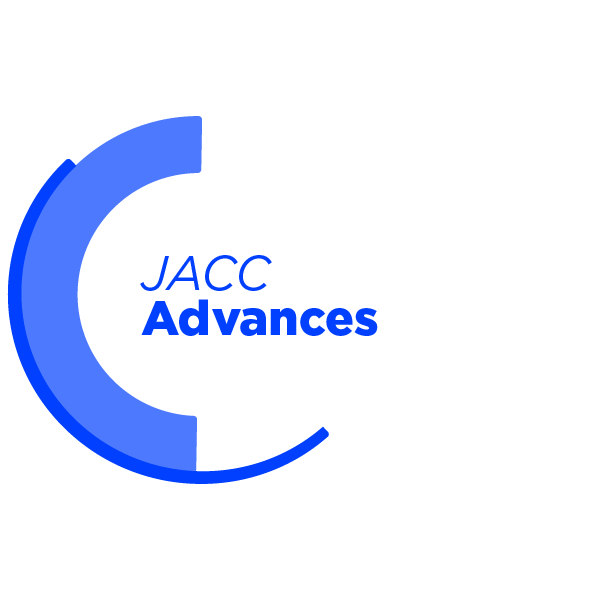JACC in a Flash
Featured topics and Editors' Picks from all of ACC's JACC Journals.

EMERGE LAA Study: Amulet Occluder Found Safe, Effective in Real-World Setting
The Amulet occluder was found to be safe and effective in the real-world setting, with more experienced operators demonstrating improved implant success and fewer cases of pericardial effusion, according to results from the EMERGE Left Atrial Appendage (LAA) study published in JACC: Cardiovascular Interventions.
Mohamad Adnan Alkhouli, MD, FACC, et al., used data from 5,499 patients from ACC's LAAO Registry, who underwent attempted Amulet occluder implantation in the U.S. between Aug. 14, 2021 through Dec. 31, 2022. The device was approved by the U.S. Food and Drug Administration in August 2021. The mean age of the patients was 76.9 years, 40.3% were women and 94.0% were White, and the mean CHA2DS2-VASc score was 4.7 and the mean HAS-BLED score was 2.7.
The safety composite endpoint included all-cause death, ischemic stroke, systemic embolism, or device/procedure-related events requiring open cardiac surgery or endovascular intervention between device implantation and seven days or hospital discharge. The authors also analyzed adverse events at 45 days stratified by operator experience: early (<10 cases), moderate (10-29 cases) and high (30+ cases).
Results found that implant success occurred in 95.8% of cases, with complete closure observed in 97.2% post procedure and 87.1% at 45 days. In addition, 0.76% of patients experienced a safety composite endpoint event.
Recorded major adverse events, with major bleeding and pericardial effusion as the main drivers, occurred in 2.9% of cases in-hospital and 5.7% of cases throughout the 45-day follow-up period. The authors noted that increased operator experience was associated with a significant decrease in pericardial effusion requiring surgical or percutaneous intervention both in-hospital (early vs. high experience: 1.8% vs. 1.1%; p=0.006) and at 45 days (2.3% vs. 1.5%; p=0.012).
"The findings in this study showed procedural outcomes improved as operator experience increased, with significantly improved implant success and more efficient procedures," note the authors. "Operators with less experience discharged more patients on [oral anticoagulation] rather than the instructions for use-recommended dual antiplatelet therapy. Clinical outcomes were improved when operators gained experience."
In an accompanying editorial comment, Apostolos Tzikas, MD, adds: "The introduction of a second [LAA occluder] in the U.S. market provides the opportunity to offer patient-tailored implantations of optimal quality."
Alkhouli M, Freeman JV, Ellis CR, et al. JACC Cardiovasc Interv 2024;17:422-34.

A Universal Risk Prediction Model For Individuals With or Without ASCVD?
A universal risk prediction model performed well for identifying persons at risk for major adverse cardiovascular event (MACE), whether or not they had atherosclerotic cardiovascular disease (ASCVD), suggesting the potential that it could help facilitate the transition from primary to secondary prevention, according to a recent study published in JACC.
Yejin Mok, PhD, MPH, et al., examined data from 9,138 participants from the observational Atherosclerosis Risk in Communities (ARIC) study (mean age 62.9 years, 57% women, 20% Black, 609 with ASCVD at baseline), to look for predictors of risk and their association with MACE including myocardial infarction, stroke and heart failure (HF). The investigators included established risk factors, along with "risk enhancers" from the 2018 ACC/American Heart Association cholesterol guideline, including family history of premature ASCVD, hsCRP, lipoprotein(a), triglycerides and apolipoprotein B, as well as predictors from the ARIC Heart Failure risk score, including body mass index, heart rate and cardiac biomarkers including troponin and natriuretic peptides.
Overall, 3,209 MACE events occurred – 2,791 of which occurred in participants with no prior ASCVD – over approximately 20 years. Most predictors had similar associations with MACE regardless of baseline ASCVD status.
Using 10 predictors determined by least absolute shrinkage and selector operator regression and bootstrapping, a universal risk prediction model demonstrated good discrimination for both persons without or with ASCVD (c-statistics of 0.747 and 0.691, respectively) as well as risk classification and excellent calibration for both groups. While risk of MACE was generally lower in participants without ASCVD, the approach identified some individuals without ASCVD who had a higher risk then some with ASCVD. External validation of the model was conducted with 5,322 participants from the Multi-Ethnic Study of Atherosclerosis.
"It is worth highlighting that the secondary risk classification system in the current ACC/AHA guidelines for patients with ASCVD does not provide quantitative risk," write the authors. "In this context, our universal model is unique because it can provide specific predicted risk of MACE even among these high-risk populations with prior ASCVD and possibly inform future guidelines." Furthermore, they note that the universal risk model could "streamline clinical risk discussions between clinicians and patients," as well as identify individuals without ASCVD but with "CHD-equivalent" risk.
"The universal personalized risk assessment approach…is conceptually promising," add Pier Sergio Saba, MD, PhD, Sadeer G. Al-Kindi, MD, FACC, and Khurram Nasir, MD, MPH, MSc, MBBS, FACC, in their accompanying editorial comment. "The authors are to be commended for moving beyond ASCVD event risk estimation and toward a global risk assessment."
Mok Y, Dardari Z, Sang Y, et al. J Am Coll Cardiol 2024;83:562-73.

IMPACT Registry: Increased Use of TPVR With Balloon-Expandable Valves
Use of transcatheter pulmonary valve replacement (TPVR) with balloon-expandable valves, notably for the treatment of regurgitant native right ventricular outflow tracts (RVOTs) with the SAPIEN valve, has increased over time, according to a recent study published in JACC: Cardiovascular Interventions.

Review Looks at Training Pathways, Competencies For Critical Care Cardiology
As interest in training for critical care cardiology (CCC) continues to rise, a recent study found there is significant heterogeneity in current standardized CCC training paradigms for meeting training competencies and board certifications, reinforcing the unmet need to define competencies in the field, according to a study published in JACC: Advances.
Keywords: Cardiology Magazine, ACC Publications, Critical Care, Atherosclerosis, Fellowships and Scholarships, Curriculum, Reference Standards
